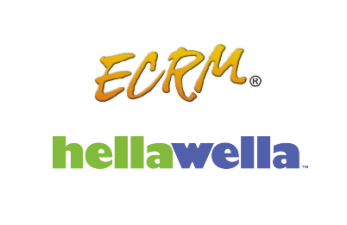ECRM/HellaWella Special Report: The Healthy Food Shopper 10/20/2015
Retailers looking to enhance service to their health-minded shoppers would do better to face their food products backward on store shelves, as ingredient lists and nutritional information trump brand names and package design among this demographic, according to a recent study by ECRM and HellaWella, a consumer healthy-living website owned by Lebhar-Friedman, which also owns Drug Store News.
(Click here to view the full report with charts, from the October 19 issue of Drug Store News)
The study, based on a survey of approximately 750 participants, examined how consumers who are part of today’s healthy lifestyle culture perceive various food products and categories from a wellness standpoint, and how these perceptions drive their shopping behavior. HellaWella (HellaWella.com) provides news, research, product reviews and lifestyle tips for consumers interested in healthy and sustainable living, and surveyed its audience this past August on how they shopped for food.
What’s clear from the research is the fact that these healthy-lifestyle consumers spend more time reading labels, are willing to pay more and will go out of their way — including visiting several retailers during a single trip — to find the products that meet their wellness needs.
What’s healthy?
Trans-fat-free and low-sugar were among the most important food designations among those consumers surveyed. Interestingly, local came in third, just ahead of natural. While the local designation doesn’t indicate that food is healthier per se, there is the perception that these foods are fresher and better for the environment due to less fossil fuel consumed in their transport — a very important factor among healthy-lifestyle shoppers.
Not surprisingly, produce was cited as the top grocery department where respondents shopped for healthy foods, with the front-end checkouts — filled with candy, gum and soft drinks — ranking at the bottom of the list. However, prepared foods also ranked relatively low in importance among those surveyed. The respondents’ verbatim comments provide some insights into why this might be the case. First, many indicated that they are avid label readers, and want to know exactly what goes into the foods that they eat — such information is lacking in most prepared foods departments. More likely, however, is the propensity for these healthy-lifestyle shoppers to purchase individual ingredients and to make their meals from scratch.
Inside-out
When it comes to packaging, what’s on the inside is more important than what’s on the outside. A product’s ingredient listing and nutritional values far outweighed its brand name and package design — which actually had the least influence in driving purchase decisions among healthy-lifestyle shoppers. More than 65% of those surveyed ranked ingredient listing as “highly influential,” and almost half (47%) cited nutritional value as the same. This sharply contrasts with a product’s brand name — cited by only 5% as “highly influential” — and package design (1.8%).
When it comes to defining “natural” foods in the healthy-lifestyle shopper’s mind, it’s more a matter of what’s not in the products than what is. Among those items they considered most important for natural foods were that they are chemical free, preservative-free and non-GMO. Other attributes by which they defined an item as natural were organic, free-range, grass-fed and locally sourced. More than 70% of respondents said that it was important or very important to purchase natural foods — as they defined natural.
Loco for local
While locally sourced foods aren’t necessarily healthier than other foods, these products are nevertheless very important to healthy-lifestyle shoppers, and more than half of those surveyed cited them as “important” or “very important.” Not only do they view local-sourced products as fresher, but better from a sustainability standpoint, and by supporting local suppliers, they are also supporting their own communities.
Many of those shoppers surveyed have gone “hyperlocal” and said they’ve switched from buying their own produce to growing it, giving them true “farm-to-fork” transparency.
So, in addition to facing products backward, perhaps food retailers may want to add seeds and garden accessories to their produce sections.

